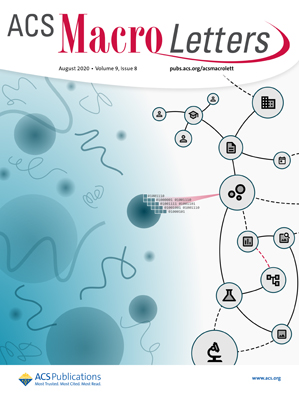Design of Precise Nanoparticles via Polymer Crystallization
IF 5.1
Q1 POLYMER SCIENCE
引用次数: 0
Abstract
The utilization of polymer crystallization to manipulate the self-assembly of polymeric amphiphiles in solution is gaining increasing attention for the design of anisotropic core–shell nanoparticles and even more complex hierarchical architectures. Notably, the living-crystallization-driven self-assembly (CDSA) method, which involves seeded growth, has emerged as an ambient temperature approach for creating low-dispersity nanomaterials such as one-dimensional (1D) cylinders and two-dimensional (2D) platelets. This technique offers predictable size control and facilitates the creation of segmented structures with spatially defined compositions and functionalities, and in this process the epitaxial crystallization is regarded as the intrinsic mechanism of living CDSA. For this context, in this Viewpoint, we delineate the key aspects of the living CDSA seeded growth method, with a particular emphasis on the mechanism of seeded heteroepitaxial growth employing crystalline cores with distinct chemistries from the polymer crystallization perspective. Revealing the in-depth mechanism of heteroepitaxial crystallization enables the expansion of the design of segmented nanoparticles where the core compositions and functionalities are spatially defined. Utilizing the chemically distinct compositions and polymer crystallization strategies, the synthetic processes of 2D hollow platelets with a unique architecture are also summarized, which are of special interest for soft matter.

基于聚合物结晶的精密纳米颗粒设计
利用聚合物结晶来操纵聚合物两亲体在溶液中的自组装,在设计各向异性核-壳纳米粒子甚至更复杂的层次结构方面越来越受到关注。值得注意的是,涉及种子生长的活结晶驱动自组装(CDSA)方法已经成为一种环境温度下制造低分散性纳米材料的方法,如一维(1D)圆柱体和二维(2D)血小板。这种技术提供了可预测的尺寸控制,并促进了具有空间定义的成分和功能的分段结构的创建,在这个过程中,外延结晶被认为是活CDSA的内在机制。在此背景下,在本观点中,我们描述了活CDSA种子生长方法的关键方面,特别强调从聚合物结晶的角度出发,采用具有不同化学性质的晶芯进行种子异质外延生长的机制。揭示异质外延晶化的深层机制有助于扩展纳米颗粒的设计,其中核心成分和功能在空间上是明确的。利用不同的化学成分和聚合物结晶策略,总结了具有独特结构的二维中空薄片的合成工艺,这对软物质具有特殊的意义。
本文章由计算机程序翻译,如有差异,请以英文原文为准。
求助全文
约1分钟内获得全文
求助全文
来源期刊
CiteScore
10.40
自引率
3.40%
发文量
209
审稿时长
1 months
期刊介绍:
ACS Macro Letters publishes research in all areas of contemporary soft matter science in which macromolecules play a key role, including nanotechnology, self-assembly, supramolecular chemistry, biomaterials, energy generation and storage, and renewable/sustainable materials. Submissions to ACS Macro Letters should justify clearly the rapid disclosure of the key elements of the study. The scope of the journal includes high-impact research of broad interest in all areas of polymer science and engineering, including cross-disciplinary research that interfaces with polymer science.
With the launch of ACS Macro Letters, all Communications that were formerly published in Macromolecules and Biomacromolecules will be published as Letters in ACS Macro Letters.

 求助内容:
求助内容: 应助结果提醒方式:
应助结果提醒方式:


